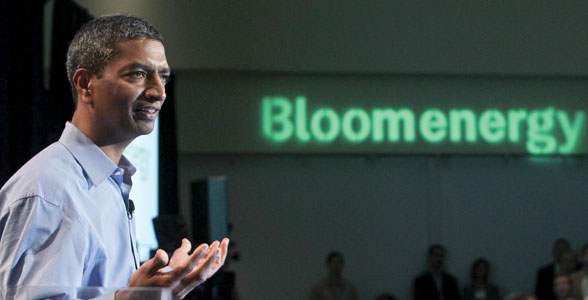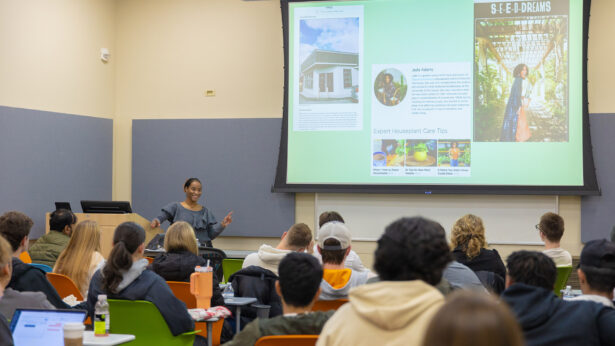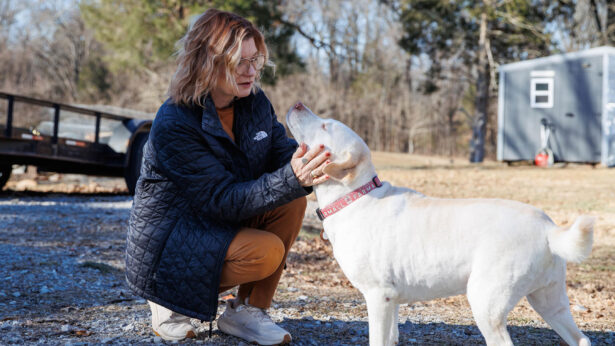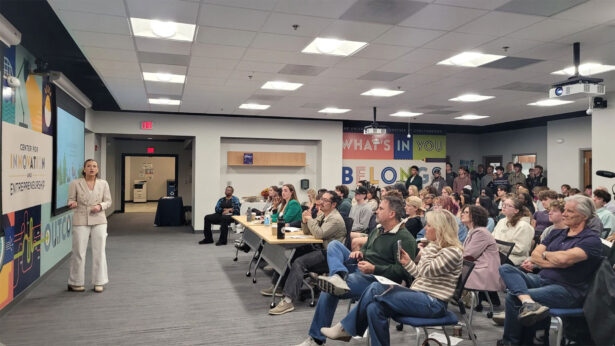By Cindy Carroll
To Colonel Michael Panarisi, it’s crystal clear: He sees a distinct connection between the work of the SimCenter: National Center for Computational Engineering at UT Chattanooga and the U.S. Air Force’s Arnold Engineering Development Center in Tullahoma, Tennessee.
Panarisi, who commands AEDC, says it’s expensive to operate the flight simulation test facility equipped with aerodynamic and propulsion wind tunnels, rocket and turbine engine test cells, space environmental chambers, arc heaters, ballistic ranges, and other specialized units.
In the critical technology area of computational modeling and simulation, the national SimCenter is solving real-world engineering problems in hydrodynamics, aerodynamics, propulsion, heat transfer, electromagnetics, and computational design optimization. Its computational engineers develop simulations AEDC can use before the first fan swirls in Tullahoma.
“Any work done at the SimCenter is money saved by the nation,” says Panarisi. “Reducing the cost of physical testing is literally money in the bank.”
Panarisi spoke at the recent unveiling of a small-scale F-111 wind tunnel model display, now housed in the atrium of the SimCenter to inspire students and visitors. AEDC made the unusual offer to lend the valuable F-111 model, and at the dedication, Dr. David Whitfield, SimCenter director and associate dean of the UTC College of Engineering and Computer Science, made an equally unusual public request — to forge a new partnership between the two entities.
“What we do at the SimCenter supplements the testing you do at the AEDC,” Whitfield said. “You’re not far from Chattanooga, and I am wondering if we can make arrangements for our graduate and doctoral students to tour AEDC, to be inspired and understand what you do?”
Panarisi immediately responded, “Done.”
Another done deal: Chattanooga’s first Bloom Box
Originally established in 2002, the SimCenter at UT Chattanooga took a significant step forward with substantial private support to become the SimCenter: National Center for Computational Engineering in 2007. Through the development of external partnerships, the National SimCenter strengthens the high-technology intellectual base of Chattanooga and stimulates and supports ongoing economic development initiatives.
A long-standing partnership with the CEO of California’s Bloom Energy Corporation, K. R. Sridhar, bore fruit with the introduction of Chattanooga’s first Bloom Box, a 100-kilowatt energy server poised to become an important alternative energy source for the nation’s power grid.
The Bloom Energy server uses solid oxide fuel-cell technology. SimCenter researchers evaluated the cell’s efficiency and continue to monitor the new installation.
In addition to its relationship to the SimCenter, Bloom Energy also has a partnership with Chattanooga power provider EPB (the Electric Power Board of Chattanooga) and TVA (the Tennessee Valley Authority), which began with Bloom’s first field trial of its technology in 2006. That successful trial was a key milestone on Bloom’s path to commercialization.
Located on the top floor of the EPB building in downtown Chattanooga, the Bloom Box is a showcase piece for innovation and for successful collaboration between the public and private sectors.
“UTC and the Tennessee Valley have been exceptional partners from the beginning, and the valuable insights gained here have helped shape our product into the commercially viable entity it is today,” Sridhar says.
Sridhar intends to effect change worldwide with the Bloom Box, scrubbing the notion that companies must decide between their budget and their conscience to go green. Bloom says installing its energy servers allows companies to dramatically reduce their carbon footprint, but not at the expense of the bottom line.
Working with IBM
UTC’s Whitfield says an agreement with IBM Corporation is shaping a beneficial relationship for the SimCenter. Providing both direct and indirect benefits, the collaboration will enhance skills in computational engineering at the SimCenter through hands-on experience with new technology.
Dave Turek, vice-president of deep computing for IBM, calls the SimCenter a “crown jewel.” He says many manufacturers are changing the way they test models and are analyzing with computer simulations, thus cutting design and testing time from more than a year to a few minutes.
A critical objective of the IBM agreement is to establish a new data-solution center at UTC to help develop leading-edge high-performance computing applications across a broad spectrum of industries. This solution center represents an opportunity to go beyond the needs of the SimCenter team and better leverage the capability of this facility.
In January 2010, IBM donated two advanced technology computers to the SimCenter and financed a joint research effort at IBM’s T. J. Watson Research Center in New York. The SimCenter has also benefitted from using IBM’s Blue Gene supercomputers.
“In addition, we’re pursuing a program whereby the SimCenter would team with IBM to use computational simulations to benefit small to medium-sized manufacturers in the United States to improve their capability to compete in the national and international marketplace,” Whitfield says.
“I believe the SimCenter and the doctoral education we provide lifts the University of Tennessee at Chattanooga into another category of national research,” Chancellor Roger Brown says. “Our students have the chance to participate in real cutting-edge high-level work that’s being done in only a few places in the world.”



